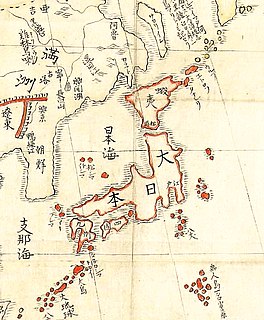 W
WThis is a list of wars involving Japan.
 W
WThe Bombardment of Kagoshima, also known as the Anglo-Satsuma War , was a battle fought between Britain and the Satsuma Domain in Kagoshima from 15 to 17 August 1863. The British were trying to extract compensation and legal justice from the daimyō of the Satsuma Domain for the Namamugi Incident in 1862, when vessels of the Royal Navy were fired on from coastal batteries near Kagoshima. The British bombarded the city in retaliation and pushed back the Satsuma, but were unable to defeat them and eventually retreated two days later. The Satsuma declared victory and after negotiation fulfilled some British demands for the Namamugi Incident.
 W
WThe Boshin War , sometimes known as the Japanese Revolution, was a civil war in Japan, fought from 1868 to 1869 between forces of the ruling Tokugawa shogunate and those seeking to return political power to the Imperial Court.
 W
WThe Boxer Rebellion (拳亂), Boxer Uprising, or Yihetuan Movement (義和團運動) was an anti-imperialist, anti-foreign, and anti-Christian uprising in China between 1899 and 1901, towards the end of the Qing dynasty.
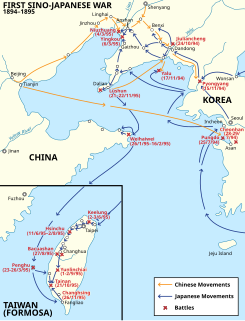 W
WThe First Sino-Japanese War was a conflict between the Qing dynasty of China and the Empire of Japan primarily over influence in Joseon Korea. After more than six months of unbroken successes by Japanese land and naval forces and the loss of the port of Weihaiwei, the Qing government sued for peace in February 1895.
 W
WThe Genkō War , also known as the Genkō Incident , was a civil war fought in Japan between the Emperor Go-Daigo and the Kamakura Shogunate from 1331 to 1333.
 W
WThe Genpei War (1180–1185) was a national civil war between the Taira and Minamoto clans during the late-Heian period of Japan. It resulted in the downfall of the Taira and the establishment of the Kamakura shogunate under Minamoto no Yoritomo in 1192.
 W
WThe Goguryeo–Wa War occurred at the end of the 4th century and the beginning of the 5th century between Goguryeo and the Baekje–Wa alliance. As a result, Goguryeo made both Silla and Baekje its subjects, bringing about a unification of the Three Kingdoms of Korea that lasted about 50 years.
 W
WThe Gosannen War, also known as the Later Three-Year War, was fought in the late 1080s in Japan's Mutsu Province on the island of Honshū.
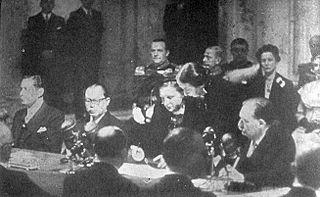 W
WThe Indonesian National Revolution, or Indonesian War of Independence, was an armed conflict and diplomatic struggle between the Republic of Indonesia and the Dutch Empire and an internal social revolution during postwar and postcolonial Indonesia. It took place between Indonesia's declaration of independence in 1945 and the Netherlands' recognition of Indonesia's independence at the end of 1949.
 W
WThe Japanese invasion of Taiwan was a conflict between the Empire of Japan and the armed forces of the short-lived Republic of Formosa following the Qing Dynasty's cession of Taiwan to Japan in April 1895 at the end of the First Sino-Japanese War. The Japanese sought to take control of their new possession, while the Republican forces fought to resist Japanese occupation. The Japanese landed near Keelung on the northern coast of Taiwan on 29 May 1895, and in a five-month campaign swept southwards to Tainan. Although their advance was slowed by guerrilla activity, the Japanese defeated the Formosan forces whenever they attempted to make a stand. The Japanese victory at Baguashan on 27 August, the largest battle ever fought on Taiwanese soil, doomed the Formosan resistance to an early defeat. The fall of Tainan on 21 October ended organised resistance to Japanese occupation, and inaugurated five decades of Japanese rule in Taiwan.
 W
WThe Iraq War was a protracted armed conflict that began in 2003 with the invasion of Iraq by a United States-led coalition that overthrew the government of Saddam Hussein. The conflict continued for much of the next decade as an insurgency emerged to oppose the occupying forces and the post-invasion Iraqi government. An estimated 151,000 to 1,033,000 Iraqis were killed in the first three to four years of conflict. US troops were officially withdrawn in 2011. However, following the spread of the Syrian Civil War and the territorial gains of the Islamic State of Iraq and the Levant (ISIL), the Obama administration decided to redeploy US forces to Iraq in 2014. Many former soldiers are employed by defense contractors and private military companies. The U.S. became re-involved in 2014 at the head of a new coalition; the insurgency and many dimensions of the civil armed conflict continue. The invasion occurred as part of the George W. Bush administration's War on Terror, following the September 11 attacks.
 W
WThe Japanese Siberian Intervention of 1918–1922 was the dispatch of Japanese military forces to the Russian Maritime Provinces as part of a larger effort by western powers and Japan to support White Russian forces against the Bolshevik Red Army during the Russian Civil War. The Japanese suffered 1,399 killed and another 1,717 deaths from disease.
 W
WJapan participated in World War I from 1914 to 1918 in an alliance with Entente Powers and played an important role in securing the sea lanes in the West Pacific and Indian Oceans against the Imperial German Navy as a member of the Allies. Politically, the Japanese Empire seized the opportunity to expand its sphere of influence in China, and to gain recognition as a great power in postwar geopolitics.
 W
WThe Kannō disturbance or Kannō incident , also called Kannō no juran, was a civil war which developed from antagonisms between shōgun Ashikaga Takauji and his brother, Ashikaga Tadayoshi, thus dividing and weakening the early Ashikaga shogunate. These events are labeled Kannō after the Japanese era or nengō which was proclaimed by the Northern Court during the years 1350 through 1351 in the Nanboku-chō period of Japanese history. One of the main effects of the Disturbance was the re-invigoration of the Southern Court's war effort due to the flow of renegades from Kyoto who followed Tadayoshi to the Southern capital of Yoshino, near Nara.
 W
WThis is a list of campaigns of Kublai Khan, founder of the Yuan dynasty.
 W
WThe Mongol invasions of Japan , which took place in 1274 and 1281, were major military efforts undertaken by Kublai Khan of the Yuan dynasty to conquer the Japanese archipelago after the submission of the Korean kingdom of Goryeo to vassaldom. Ultimately a failure, the invasion attempts are of macro-historical importance because they set a limit on Mongol expansion and rank as nation-defining events in the history of Japan. The invasions are referred to in many works of fiction and are the earliest events for which the word kamikaze is widely used, originating in reference to the two typhoons faced by the Mongol fleets.
 W
WOuter Mongolia—officially the Mongolian People's Republic—was ruled by the communist government of Khorloogiin Choibalsan during World War II and was closely linked to the Soviet Union. Mongolia, with less than a million inhabitants, was considered a breakaway province of the Republic of China by most nations. Throughout the war with Germany, the country provided the Soviet Union with economic support, such as livestock, raw materials, money, food and military clothing, violating Mongolian neutrality in favor of the Allies. Mongolia was one of two Soviet satellites not generally recognised as sovereign nations at the time, the other being the Tuvan People's Republic, both of which participated in World War II.
 W
WThe Mudan incident of 1871 was the massacre of 54 Ryūkyūan sailors in Qing-era Taiwan who wandered into the central part of Taiwan after their ship was shipwrecked.
 W
WThe Ōnin War , also known as the Upheaval of Ōnin and Ōnin-Bunmei war, was a civil war that lasted from 1467 to 1477, during the Muromachi period in Japan. Ōnin refers to the Japanese era during which the war started; the war ended during the Bunmei era. A dispute between Hosokawa Katsumoto and Yamana Sōzen escalated into a nationwide civil war involving the Ashikaga shogunate and a number of daimyō in many regions of Japan.
 W
WThe Russo-Japanese War was fought during 1904 and 1905 between the Russian Empire and the Empire of Japan over rival imperial ambitions in Manchuria and Korea. The major theatres of operations were the Liaodong Peninsula and Mukden in Southern Manchuria and the seas around Korea, Japan and the Yellow Sea.
 W
WThe invasion of Ryukyu by forces of the Japanese feudal domain of Satsuma took place from March to May of 1609, and marked the beginning of the Ryukyu Kingdom's status as a vassal state under the Satsuma domain. The invasion force was met with stiff resistance from the Ryukyuan military on all but one island during the campaign. Ryukyu would remain a vassal state under Satsuma, alongside its already long-established tributary relationship with China, until it was formally annexed by Japan in 1879 as the Okinawa Prefecture.
 W
WThe Second Chōshū expedition, also called the Summer War, was a punitive expedition led by the Tokugawa shogunate against the Chōshū Domain. It followed the First Chōshū expedition of 1864.
 W
WThe Second Sino-Japanese War was a military conflict that was primarily waged between the Republic of China and the Empire of Japan from 7 July 1937 to 2 September 1945. The start of the war is typically considered to be the Marco Polo Bridge Incident in 1937, in which a dispute between Japanese and Chinese troops escalated into a full-scale invasion. Some sources in the modern People's Republic of China date the beginning of the war to the Japanese invasion of Manchuria in 1931. In China, it is known as the War of Resistance against Japanese Aggression.
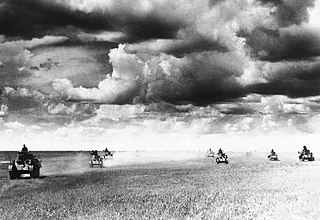 W
WThe Soviet–Japanese border conflicts, also known as the Soviet-Japanese Border War, was an undeclared border conflict fought between the Soviet Union and Japan in Northeast Asia from 1932 to 1939.
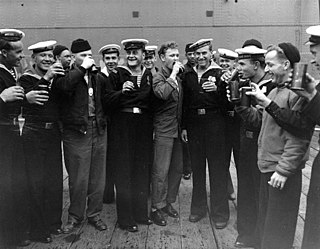 W
WThe Soviet–Japanese War was a military conflict within the Second World War beginning soon after midnight on August 9, 1945, with the Soviet invasion of the Japanese puppet state of Manchukuo. The Soviets and Mongolians ended Japanese control of Manchukuo, Mengjiang, northern Korea, Karafuto, and the Chishima Islands. The defeat of Japan's Kwantung Army helped bring about the Japanese surrender and the termination of World War II. The Soviet entry into the war was a significant factor in the Japanese government's decision to surrender unconditionally, as it made apparent that the Soviet Union was not willing to act as a third party in negotiating an end to hostilities on conditional terms.
 W
WThe Japanese punitive expedition to Taiwan in 1874, referred to in Japan as the Taiwan Expedition and in Taiwan and China as the Mudan incident, was a punitive expedition launched by the Japanese in retaliation for the murder of 54 Ryukyuan sailors by Paiwan aborigines near the southwestern tip of Taiwan in December 1871. The success of the expedition, which marked the first overseas deployment of the Imperial Japanese Army and Imperial Japanese Navy, revealed the fragility of the Qing dynasty's hold on Taiwan and encouraged further Japanese adventurism. Diplomatically, Japan's embroilment with China in 1874 was eventually resolved by a British arbitration under which Qing China agreed to compensate Japan for property damage. Some ambiguous wording in the agreed terms were later argued by Japan to be confirmation of Chinese renunciation of suzerainty over the Ryukyu Islands, paving the way for de facto Japanese incorporation of Ryukyu in 1879.
 W
WThe Toi invasion was the invasion of northern Kyūshū by Jurchen pirates in 1019. At the time, Toi meant "barbarian" in the Korean language.
 W
WThe War in Vietnam, codenamed Operation Masterdom by the British, and also known as Nam Bộ kháng chiến by the Vietnamese, was a post–World War II armed conflict involving a largely British-Indian and French task force and Japanese troops from the Southern Expeditionary Army Group, versus the Vietnamese communist movement, the Viet Minh, for control of the southern half of the country, after the unconditional Japanese surrender.
 W
WWorld War I was a global war originating in Europe that lasted from 28 July 1914 to 11 November 1918. Contemporaneously known as the Great War or "the war to end all wars", it led to the mobilisation of more than 70 million military personnel, including 60 million Europeans, making it one of the largest wars in history. It is also one of the deadliest conflicts in history, with an estimated nine million combatant deaths and 13 million civilian deaths as a direct result of the war, while resulting genocides and the related 1918 Spanish flu pandemic caused another 17–100 million deaths worldwide, including an estimated 2.64 million Spanish flu deaths in Europe and as many as 675,000 Spanish flu deaths in the United States.
 W
WWorld War II, also known as the Second World War, was a global war that lasted from 1939 to 1945. It involved the vast majority of the world's countries—including all the great powers—forming two opposing military alliances: the Allies and the Axis. In a state of total war, directly involving more than 100 million people from more than 30 countries, the major participants threw their entire economic, industrial, and scientific capabilities behind the war effort, blurring the distinction between civilian and military resources. World War II was the deadliest conflict in human history, marked by 70 to 85 million fatalities. Tens of millions of people died due to genocides, premeditated death from starvation, massacres, and disease. Aircraft played a major role in the conflict, including in the use of strategic bombing of population centres, and the only uses of nuclear weapons in war.